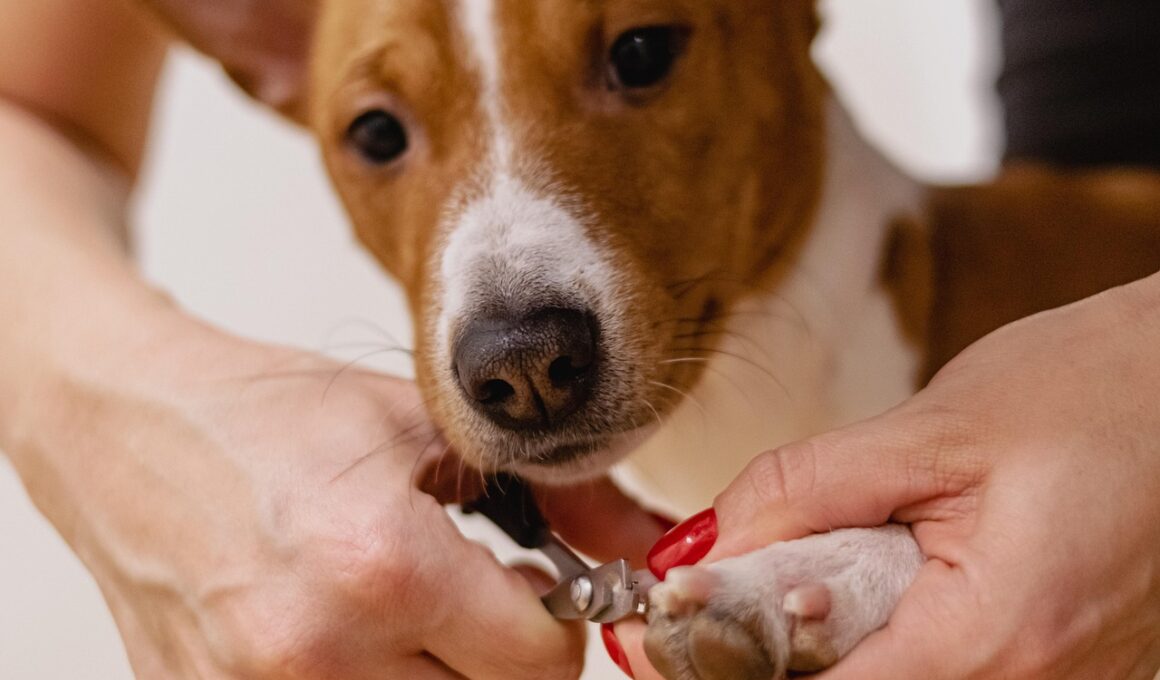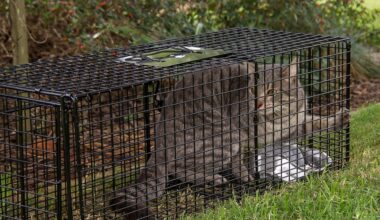Seasonal Nail Care Tips: Keeping Your Dog’s Nails Healthy All Year
Caring for your dog’s nails throughout the seasons is crucial for their comfort and health. Regular nail maintenance is essential, as overgrown nails can lead to pain, injury, and difficulty walking. Seasonal changes can affect your dog’s nails, calling for different care techniques at various times of the year. Here are some important tips to ensure your dog’s nails remain in excellent condition no matter what season it is. Winter can be particularly tough on a dog’s nails due to cold, wet conditions. It’s important to check for snow or ice buildup that can cause discomfort. Trim the nails regularly, and consider using a balm on their pads to prevent cracking. During spring, it’s essential to monitor for cracked nails as dogs tend to be more active outdoors. Summer brings unique challenges like excessive heat, so keep your dog’s nails trimmed to avoid discomfort from hot pavement. Finally, in autumn, be watchful of fallen leaves that can mask hidden debris. Regular checks are essential for maintaining their paws and keeping nails healthy.
Winter Nail Care Tips
During winter, the harsh cold can affect your dog’s paw care routine, including nail maintenance. Dogs’ nails often become more brittle due to cold weather, which can lead to cracking and breaking. To prevent this, make sure to keep their nails trimmed shorter than you might during warmer months. Utilizing a good pair of nail clippers designed for dogs can ensure clean cuts without causing splintering. Additionally, consider using a paw balm to condition and protect their paw pads from the elements. Wipe your dog’s paws after walks to remove snow and ice, which can become lodged between their toes. This practice ultimately protects their nails and fosters comfort while walking on various surfaces. Regular inspections every week will help you catch any growth early, allowing you to maintain healthy nails. If necessary, consult a groomer for more advanced grooming techniques. A well-maintained grooming routine leads to happy, healthy dogs even amid chilly weather. Be consistent and vigilant, and your dog’s nails will remain in top shape throughout the winter season.
As spring arrives, the focus on your dog’s grooming routine must shift yet again to adapt to the changing weather conditions. Spring is a time of renewed activity, as many dogs engage more frequently in outdoor play, which can expose their nails to greater wear. With the increased activity comes the risk of cracked or broken nails if they are not properly maintained. Regularly trim your dog’s nails to keep them at a manageable length and less prone to breakage. Smooth any sharp edges with a nail file or grinder to further minimize potential injury. Consider incorporating additional checks during grooming sessions for any signs of damage. Moreover, allergies can also appear more frequently in spring, impacting your dog’s skin and nails. Keeping their environment clean is important to reduce allergens that may threaten their well-being. Finally, a balanced diet enriched with essential fatty acids can promote stronger nails. This simple rule helps to reinforce the nails and minimize the effects of seasonal changes. Adapting your maintenance schedule is key to ensuring your dog’s comfort and health as they enjoy springtime activities.
Summer Nail Care Tips
The hot summer months present unique challenges for maintaining your dog’s nail health. High temperatures can cause pavements to heat up, which can result in discomfort for your dog’s paws, especially if their nails are too long. Regular trimming during hot weather is a must. A good rule of thumb is to perform nail trims every three to four weeks, ensuring they do not get too long. Watch for signs of discomfort when walking, as this is often an indication that their nails need attention. You can also consider taking them on walks early in the morning or later in the evening when temperatures tend to be cooler. Additionally, providing a soft surface for your dog to walk on at home can reduce the impact of heat on their nails. Hydration is equally important during summer, as it supports overall paw health. Regular visits to a vet or groomer can ensure nails are always kept in line with seasonal demands. These preventive measures will keep your pooch comfortable and confident during their summertime adventures.
As autumn approaches, it becomes essential to adjust your dog’s nail care routine. With leaves falling and the terrain changing, your dog’s nails might face new challenges linked to seasonal activity. Swept away or hidden debris can pose risks, such as splinters or infections, affecting the health of your dog’s feet and nails. Proactively check their paws after outdoor adventures, ensuring nothing is lodged between their toes or nails. As the weather cools, your dog’s nail trimming schedule may need to increase slightly to keep them short and manageable. Trimming can be beneficial in preventing breakage caused by vigorous running on uneven surfaces during play. Additionally, nutritional adjustments can enhance nail health, so consider foods rich in omega fatty acids during fall. If your dog’s nails have any signs of damage or unusual wear, consult with a professional groomer or veterinarian for guidance. Keeping your dog’s nails healthy throughout autumn prepares them for the upcoming winter months. Around the house, make it a habit to wipe their paws after every outdoor session to keep their nails clean and free from debris.
Final Tips for Nail Health
Overall, year-round nail care is vital in maintaining your dog’s comfort and mobility. Each season provides specific challenges that affect nail maintenance; hence a meticulous approach during different times of the year is essential. Educating yourself on your dog’s specific breed and their grooming needs can pave the way for long-term nail health. For many dog owners, it can be a challenge to endure regular nail trims; however, creating a positive experience can make this part of grooming easier. Use treats and summer toys to distract and reward your dog during nail grooming sessions. Consider using a professional groomer for dogs that are particularly anxious about nail clippings; they have techniques to make the experience more pleasant. Also, invest in quality grooming tools for safe and effective maintenance. Observing their behavior after grooming can provide insights into their comfort level. Establishing open lines of communication with your dog’s veterinarian can further enhance nail care practices. By being proactive, your dog’s nails can remain healthy, which ultimately leads to a happier, more active lifestyle.
In conclusion, seasonal nail care is crucial for the well-being of your dog. Regular trimming and appropriate techniques throughout the year help maintain healthy nails and prevent discomfort. Each season brings unique challenges, but with vigilance and proactive measures, you can ensure your four-legged friends have the best possible care. Remember to check your dog’s nails routinely, regardless of your preferred season. Incorporate proper nutrition, regular vet visits, and grooming practices tailored to each season. Knowledge of your dog’s specific needs will empower you to address any potential issues effectively. Sharing tips with fellow dog owners can create a community of educated pet caregivers who prioritize their pets’ health. The joy that comes from keeping your dog active and happy while having healthy nails is immeasurable. Embrace this routine as part of your dog’s overall care plan, and enjoy the different activities with your furry friend that each season brings. Ensure that their nails are always in optimal shape for any upcoming adventure, making their life as comfortable as possible.


